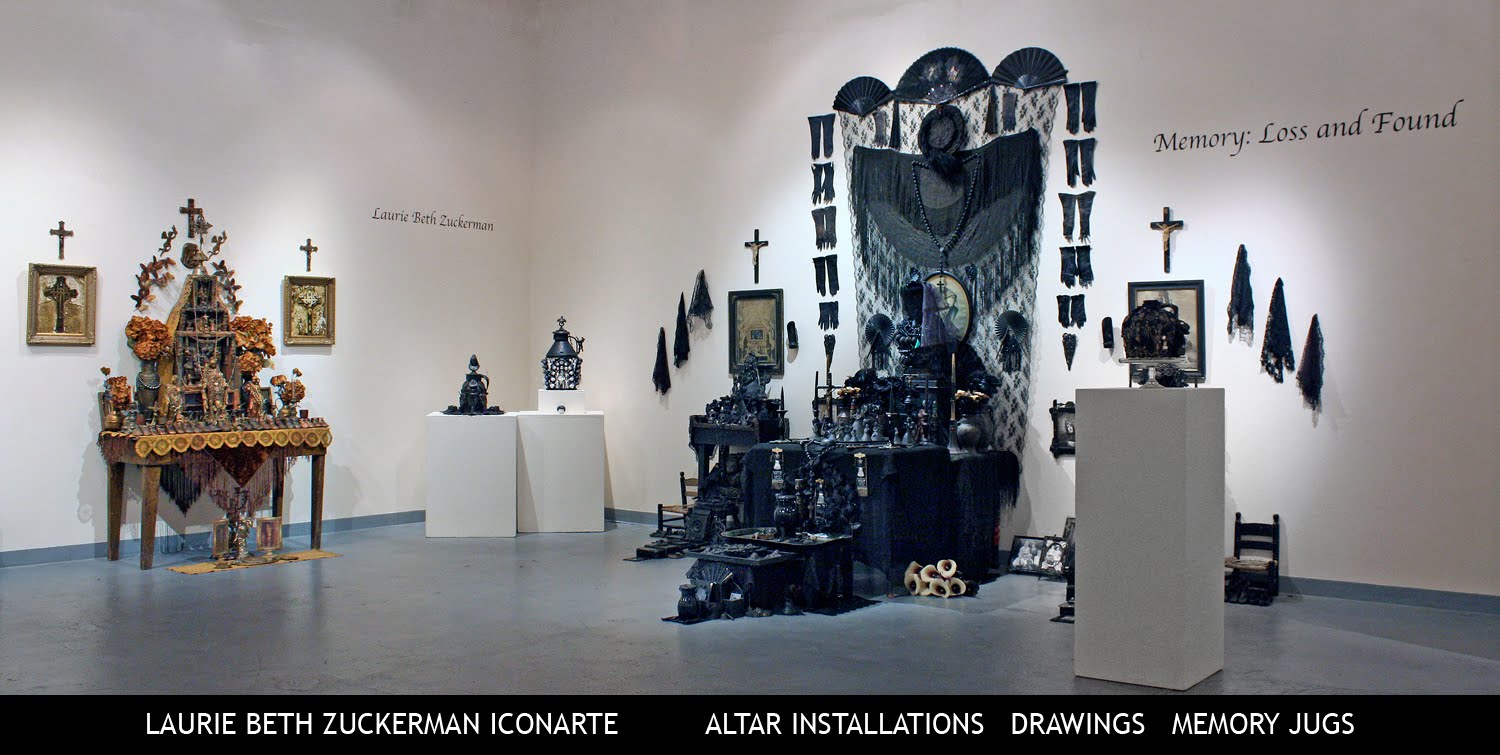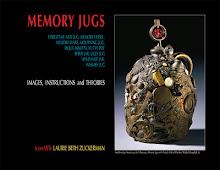


A simple Diá de los Muertos Ofrenda altar by Laurie Zuckerman is on display at the historic Bellvue Store. The altar was up for the 1st Annual Dia de los Muertos Celebration in conjunction with Bev Perina's monthly Fine Art & Antique Shows and The Artists' Nook Diá de los Muertos Art Challenge, October 10-November 2. The community was invited to participate in this ofrenda ritual by bringing offerings and photos to celebrate the lives of their loved ones, and a couple of artists brought photos at the opening. I created a nicho in honor of the "Mexican Kitchen" to top the altar. The altar is not dedicated to anyone in my family, as I wanted it to be a neutral space for people to contribute to.

The Coloradoan newspaper's entertainment Ticket editor, Stacy Nick, interviewed me by phone for her article on Day of the Dead art and altar events in Northern Colorado this week. Here's the text of the article. The newspaper version included a photo of my Day of the Dead altar installation that was on display at the Loveland Art Museum's Grave Matters exhibit in the summer of 2006.
The bright colors and mocking skeletons used to celebrate Dia de los Muertos (the Day of the Dead) may seem a tad morbid but it's that artwork that has captured the interest of people around the world.
Art has been heavily tied to the Day of the Dead (Nov. 1 and 2, when people erect altars to honor and communicate with deceased family members), especially after artist Jose Guadalupe Posada (1851-1913) created his cartoonish skeleton characters, said Laurie Zuckerman, a local altar installation artist and photographer.
"Folk artists kind of jumped on that whimsical art work," said Zuckerman, who for years has travelled to regions in Mexico to see the various ways they celebrate the holiday.
Day of the Dead altars, featuring flowers, photos, food and drinks, traditionally were used as a way to encourage the souls of deceased family members to visit. But they have also come to highlight a unique niche in the art world.
Many local museums host their own Day of the Dead celebrations this week to examine the cultural and spiritual significance as well as the artistic expressions.
There is a strong American fascination with Day of the Dead celebrations and art, said Zuckerman, who puts a less religious take on her altars, using them as both creative outlets and as a way to honor her family rather than to communicate with them.
"The thing that caught me was just the attitude about celebrating death in such a way, really mocking death," she said. "Then there's this belief that the Mexican people believe the souls are really coming back once a year and they better throw them a pretty damn good party.
"I don't know that many Americans can go quite that far, but I think they're intrigued by it," Zuckerman added. "It's so opposite from anything we do here. It's so colorful and positive, and I think it really flies in the face of how our culture deals with death and mourning."
Check out this on-line version of the article.
http://www.coloradoan.com/apps/pbcs.dll/article?AID=/20081030/ENTERTAINMENT/810300302

Had a wonderful write up on Leaua Phillips blogsite in response to my Dia de los Muertos altar at the Bellvue Store. Check out her blog at: http://leauaphillips.blogspot.com/2008/10/tis-season.html



3 comments:
Laurie, these are so beautiful. I can't wait to see the one at Christine's this weekend!
Hi Laurie,
Frannie led me over...beautiful Ofrenda!! I have not been to Bellvue since my late 70's CSU college days...must visit!
Amazing US version of the ofrendas, what an artwork display. The ofrenda in the OCT. 12 post is more like a real Mexican ofrenda, the ones in Oaxaca etc. are for the tourists. The flowers would go to the sides, and yes, food, fruit and tequila are offered. Books and things that the deceased enjoyed would be present.
Someday you should go to the small towns like Mizquic to experience the real ofrendas in the poor homes and all night at the cementery.
Post a Comment